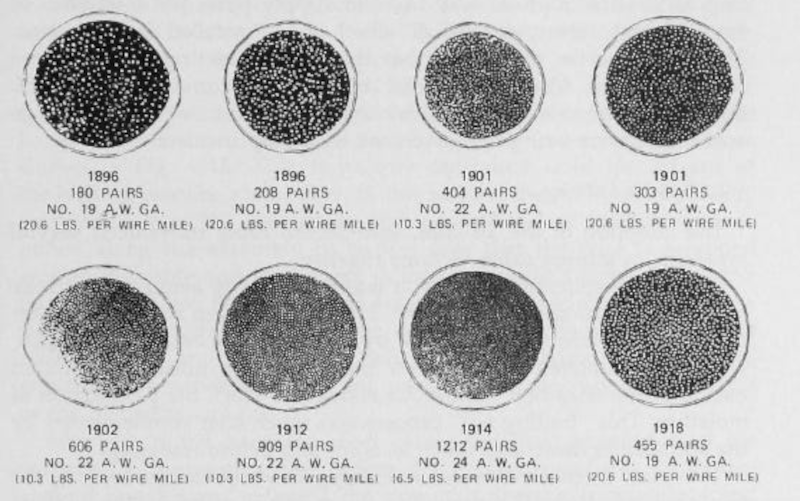We’ve often thought that while going to the moon in the 1960s was audacious, it was just the flashiest of many audacious feats attempted and accomplished in the 20th century. Imagine, for a minute, that the phone system didn’t exist today, and you stood up in front of a corporate board and said, “Let’s run copper wire to every home and business in the world.” They’d probably send you for a psychiatric evaluation. Yet we did just that, and, in the United States, that copper wire was because of the Bell system, which [Brian Potter] describes in a recent post.
The Bell company, regardless of many name changes and divisions, was clearly a very important company. [Brian] points out that in 1917, it was the second-largest company in the United States and continued to grow, eventually employing a whopping 1% of the entire U.S. workforce. That’s what happens when you have a monopoly on a product that is subject to wild demand. In 1900, Bell handled 5 million calls a day. By 1925, that number was over 50 million. In 1975, it was just shy of 500 million. If Wester Electric — just one part of Bell — was its own company, it would have been the 12th largest company in the U.S. during the 1970s.
From a technology point of view, the system was impressive in scale and rate of growth. In 1877, AT&T — the name after a restructuring — had 600 customers. A year later, it had 10,000. By 1881, that number was 100,000, and only 9 U.S. cities with more than 10,000 people lacked a phone exchange. By 1900, the 800,000 telephones in use required 2 million miles of wire!
That 2 million miles of wire had to go somewhere. New York City had hundreds of 90-foot poles, each carrying 300 wires, and people were complaining about the wires being in view. That caused AT&T to go underground. In 1888, a phone cable had 50 pairs of #18 wire. By 1939, #26 wire allowed 2,121 pairs of wires in a single cable.
Remember that the early phone system had no amplifiers. When tubes arrived, this allowed longer distances on smaller wires and radio links to reach the world. Bell’s monopoly allowed them to innovate but also hurt others who wanted to innovate.
















Considering they are ripping out copper wire with gay abandon now you probably would be sent to the laughing academy if you suggested running copper to everyone in the country.
Running copper to everyone in the country — like electric power companies do.
There’s an astonishing amount of aluminum in transmission, sub transmission, and distribution lines and cables. That is, I’ve used aluminum conductor and bus from 230kv to 4.8kv. 2x2000kcmil to 4/0. Having said that, I’ve also worked with copper from 1000kcmil to #22. Copper’s expensive, though, so unless the use case calls for it, the engineers spec AL.
Hak
Audio signal transmission with no amplification! Oh my
It was high impedance, though. It used an 600 system, I believe.
At about 1 kOhms (and up) you can use a single wire for the signal and use ground (earth) as ground connection, literally (a metal pole at both ends).
In theory, at least. The phone system was symmetric, I believe, so two wires would have been better.
The example was just meant to visualize it.
In my country, the wiring existed in two versions, also.
Twisted-pair and normal wiring, like a hifi stereo would use for the loudspeakers.
Well I would hope it was high impedance, it would be tough to keep the whole length of the telephone line plus whatever kind of speaker you use around 8 ohms ;)
filfre has a _fantatric_ series of 11 articles called “A Web Around the World”. Starts with invention of telegraph, then telephone, phone system (this topic), transatlantic cables, ends with Web Browsers and Internet. First article:
A Web Around the World, Part 1: Signals Down a Wire January 7, 2022 https://www.filfre.net/2022/01/a-web-around-the-world-part-1-signals-down-a-wire/
Thank you so much for posting this! I learned a ton and really saw the big picture of electronic communications for the first time. What a great series!